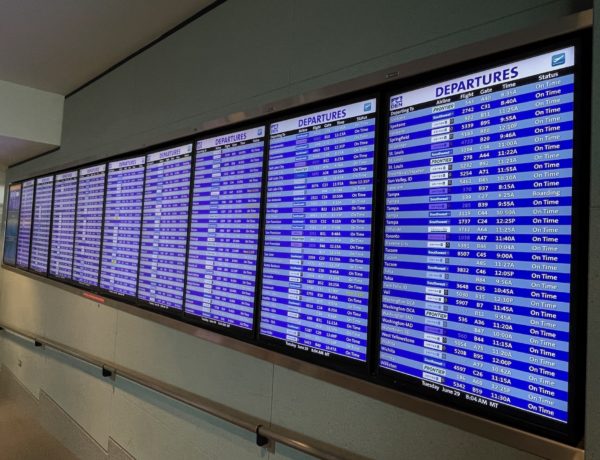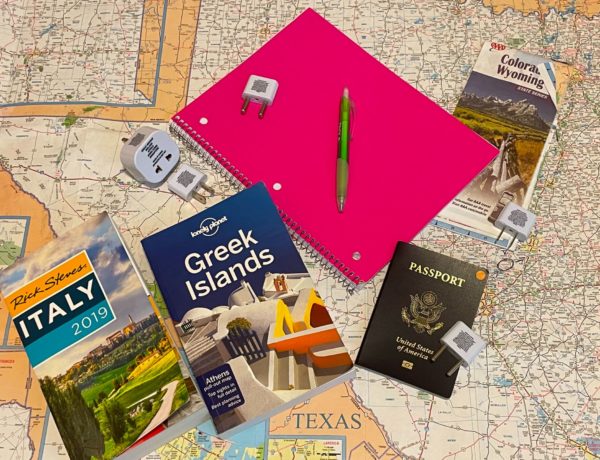If you’re at all like me, you’ve been confused (and maybe a bit envious) of the countless travel influencers you’ve seen having grand adventures traveling to Europe this summer. With Covid cases surging once again, new variants popping up, and policies changing weekly, it feels like it might be more trouble than it’s worth. I’m here to tell you it’s worth any extra hoops, and the hoops are small. Here are my tips for making traveling to Europe easy during Covid.
Table of Contents
Check trusted sources only

While getting tips from your favorite bloggers is excellent for planning, you should always defer to your destination to know what current Covid restrictions are. Every country will have a page on its official government site dedicated to Covid. Check that page to see what you’ll need to enter the country, restrictions for traveling around and visiting attractions, and contingencies for testing positive while there.
We initially chose Iceland and Greece when planning our trips because we’d only need a copy of our vaccinations to enter. Here’s an example of Iceland’s page dedicated to Covid and an example for Greece.
But don’t check this page just once. Make sure to bookmark it and check it periodically until your departure to ensure nothing has changed. If you’ll be exploring more than one city during your trip, or hopping islands, etc., it’s a good idea to check this page while you’re visiting too.
We were visiting mainland Greece as I wrote this with plans to visit an island the next day. We found that the requirements for ferry travel had changed in the few days we’d been there.
The biggest key to making travel easy is staying organized

When traveling to Europe, it’s always a good idea to carry a copy of your passport and driver’s license in case you lose the real thing. However, in Covid times, it’s an even better idea to carry a copy of your vaccination card and any forms required by the country to enter.
Most countries require travelers to complete an official form attesting to the current state of their health at least 24 hours before arrival. You’ll likely receive a confirmation page with a QR code that is emailed to you as well. But as a rule of thumb, technology isn’t as ubiquitous in other countries as it is in the US. It can be a lot faster to show a printed copy as you make your way through customs.
Speaking of customs, as soon as you land, get your passport, vaccination card or negative test, and printed form in hand. It’ll help you glide past everyone digging through their bags at the last minute. This is true for ferry rides, travel within your country, and border crossings too.
And while it can be exhausting to add more apps to your phone, many of the apps specific to facilitating international check-in and travel are worth it. If your airline or destination is promoting a particular app, go ahead and use it.
Getting back into the US
A big reason the EU encouraged its countries to refuse entry to US citizens last month was due to the politics of travel. The US has finally relaxed its restrictions for European travelers, though the requirements for entry are some of the strictest.
For instance, as a vaccinated traveler, all I needed to enter Greece was my Passenger Locator Form and proof of vaccination. However, returning to the US, I was required to show proof of a negative Covid test taken within three days of my return – regardless of vaccination. For unvaccinated travelers to the US, negative results are needed from a Covid test within one day of travel and proof of purchase for another test to be taken upon arrival.
While this sounds stressful, most airports offer acceptable rapid antigen testing. And you’re not price-gouged for the convenience in Europe either. Many major hotels may also provide testing, and at the very least, numerous clinics can facilitate tests in major cities. When you Google “Covid testing Paris” for example, just make sure to add “English” to your search.
If you do travel abroad, note that you will also be required to present this attestation form before boarding your flight home.

At home test kits as a workaround
At least three services offer “at home” test kits accepted by the US for reentry: Qured, eMed, and Optum. When researching others, be aware that they must have emergency authorization by the FDA to be accepted.

In theory, this approach should be the easiest. It’s advertised as a linear process: order test and have shipped to your home. Then, register on their site before departing for your trip. Within the 3-day window of your return, go online for your virtual visit. A licensed professional will oversee your self-testing and validate your results. Then, you’ll simply upload the results to their app and you’re all set. That’s the theory anyway…
In reality, it can be a lot more complicated. In our case, we ordered our tests on a Wednesday and were told they are temperature sensitive and would be ruined if exposed to temperatures over 86F, so someone should be home to collect them. We made arrangements to be there, though the package was delayed and stored in a FedEx warehouse for four days in temperatures over 90. When we called to request a replacement, we were told the request had been submitted, but someone would have to contact us to discuss a “solution.” We never heard from anyone, and our appeal to receive a refund since we’d done our best to use their service. That request was denied.
We declined the charge on our credit card and got our tests at the Athens airport the night before our return flights. Sometimes the most straightforward answer is the best.
Trust your common sense

Remember, you’re going to have to be healthy to get home, so while you should 100% get back to traveling, choose your excursions wisely. Instead of joining the busloads of tour groups all angling for the same view in a museum, try a self-guided walking tour instead. Tons of apps, and Rick Steve’s guidebooks, in particular, offer a variety of itineraries to walk you through significant sites and cities.
If you’re looking for a trip that will help you explore multiple locations within a country or even across the European continent, consider renting a car if train travel gives you pause. In Europe, most routes are back to full capacity, so if that worries you and you’re comfortable driving, look into a rental car instead. Traveling by car will also give you the ultimate flexibility to say yes to last-minute adventures.
Do what’s right for you and makes you comfortable. Contrary to what you may have seen in social media, people are still people even in Europe, and not everyone complies with mask mandates. While mask requirements are strictly enforced in most museums and government-run attractions, enforcement is lax in restaurants and outdoor areas. Be prepared and take the precautions that make sense to you.
Why wait?
When we were thinking through our trip, I’ll be honest; we went back and forth. What helped me feel comfortable committing to traveling at this time was the research I did.
Vaccination rates are higher in most EU countries, and their populations are fewer. Meaning your chances of contracting the virus abroad should be lower (though always possible) than at home in the US. If you’re still a little nervous but ready to venture out, look for opportunities to visit your destination in the off-season, choose less populated areas to stay in and be open to changing your itinerary.
Covid doesn’t look like it’ll be taking the hint to get out of here any time soon. So instead of being envious of all the pictures you’re seeing, say yes to that trip you’ve been putting off. With a little bit of planning, traveling to Europe can be everything you’re dreaming of.



